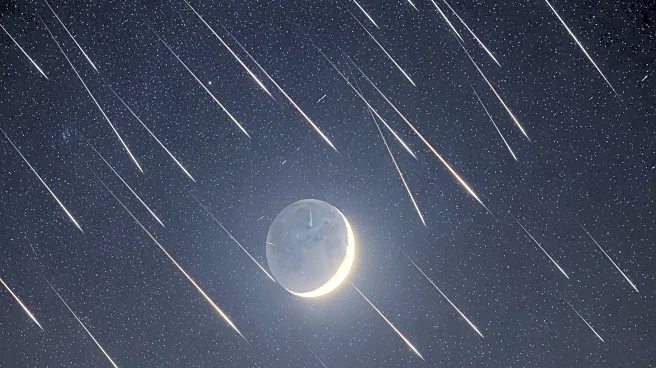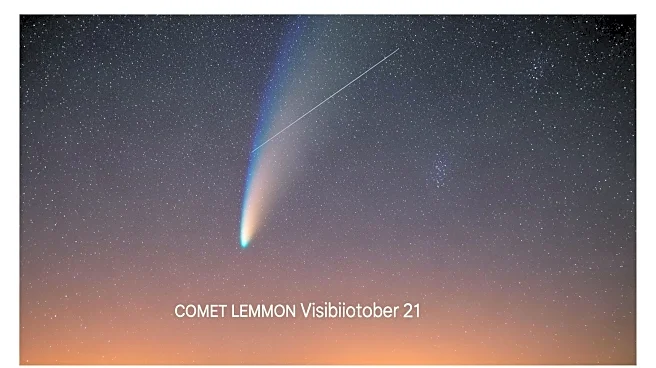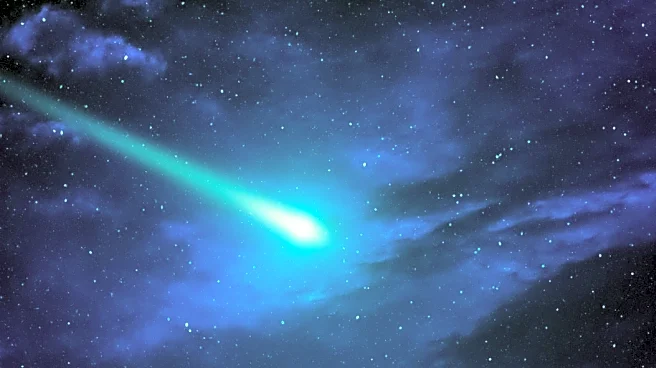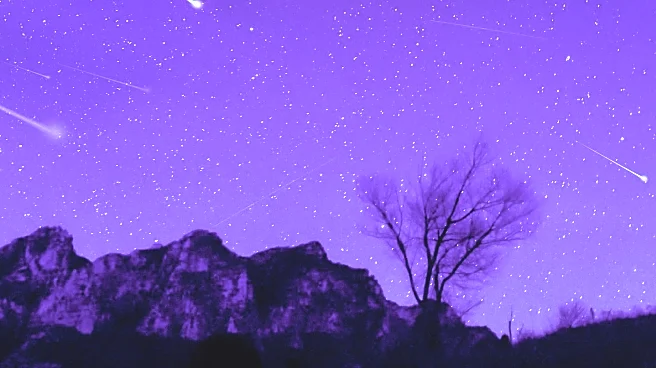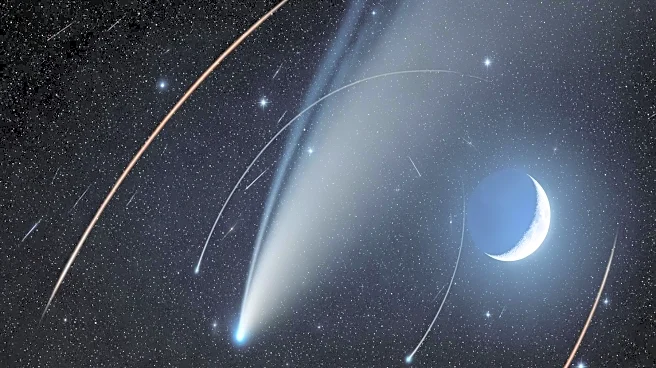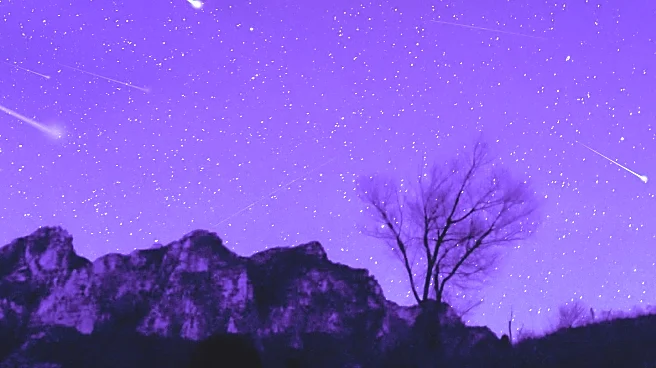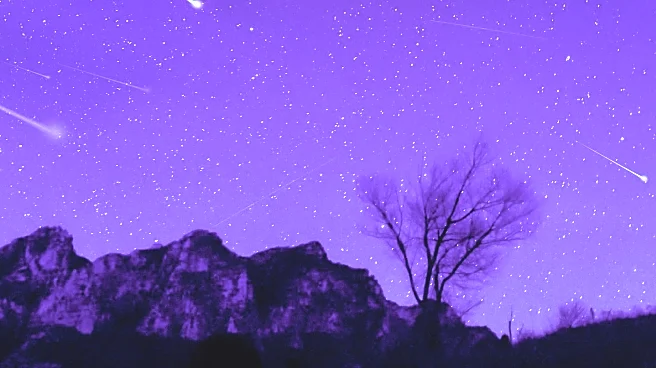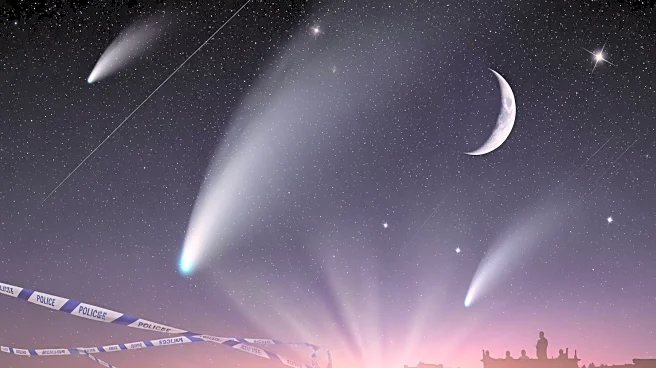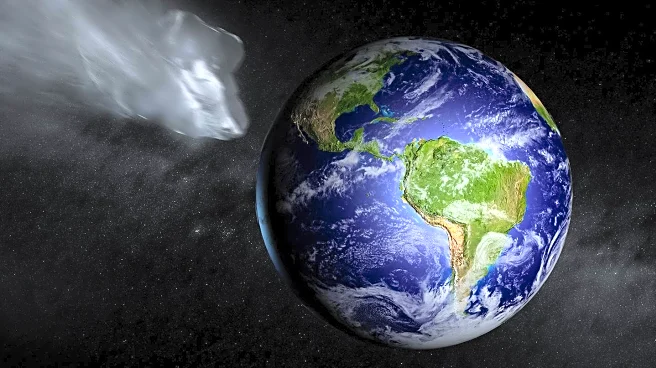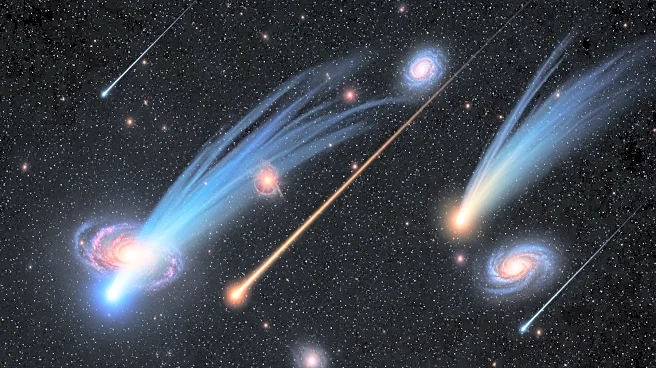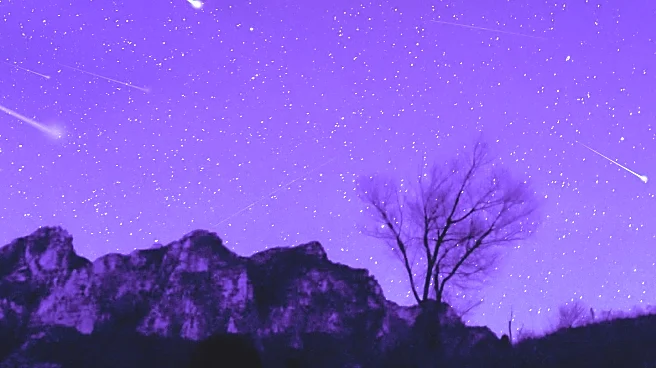What's Happening?
Montana residents are set to witness a rare celestial event with two comets, C/2025 A4 (Lemmon) and C/2025 R2 (SWAN), passing close to Earth. These comets will be visible over the next two days, offering a unique opportunity for stargazers in the region.
The comets are expected to reach peak brightness on October 20 and 21, with Lemmon visible in the western evening sky and SWAN best seen in the pre-dawn eastern horizon. Additionally, the Orionids Meteor Shower will peak concurrently, providing a spectacle of 10-20 meteors per hour. Montana's minimal light pollution and open spaces make it an ideal location for observing these astronomical phenomena.
Why It's Important?
The visibility of these comets and the meteor shower in Montana highlights the state's advantageous conditions for stargazing, due to its low population density and minimal light pollution. This event not only offers a rare visual treat for residents but also underscores the importance of preserving dark skies for astronomical observations. Such events can boost local tourism, attracting enthusiasts and researchers to the area, potentially benefiting the local economy. Moreover, it serves as an educational opportunity for schools and communities to engage with astronomy and science.
What's Next?
As the comets and meteor shower peak, local communities and astronomy clubs may organize viewing events to maximize the experience. Weather conditions will play a crucial role in visibility, and clear skies will be essential for optimal viewing. The event may prompt discussions on the importance of dark sky preservation and could lead to initiatives aimed at reducing light pollution in the region. Additionally, the interest generated by this celestial event might encourage further investment in local observatories and educational programs.
Beyond the Headlines
The occurrence of such rare celestial events can inspire a deeper appreciation for the natural world and the universe. It may also spark interest in scientific fields among young people, potentially influencing future career choices. The event serves as a reminder of the vastness of space and the ongoing need for scientific exploration and understanding. Furthermore, it highlights the cultural significance of stargazing in Montana, often referred to as 'Big Sky Country,' and its role in fostering community engagement and environmental awareness.


